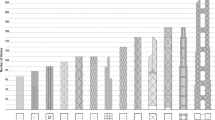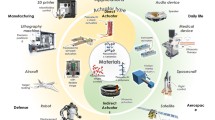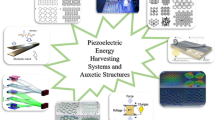Abstract
A fractor is a simple fractional-order system. Its transfer function is \(1/Fs^{\alpha }\); the coefficient, F, is called the fractance, and \(\alpha \) is called the exponent of the fractor. This paper presents how a fractor can be realized, using RC ladder circuit, meeting the predefined specifications on both F and \(\alpha \). Besides, commonly reported fractors have \(\alpha \) between 0 and 1. So, their constant phase angles (CPA) are always restricted between \(0^{\circ }\) and \(-90^{\circ }\). This work has employed GIC topology to realize fractors from any of the four quadrants, which means fractors with \(\alpha \) between \(-\)2 and +2. Hence, one can achieve any desired CPA between \(+180^{\circ }\) and \(-180^{\circ }\). The paper also exhibits how these GIC parameters can be used to tune the fractance of emulated fractors in real time, thus realizing dynamic fractors. In this work, a number of fractors are developed as per proposed technique, their impedance characteristics are studied, and fractance values are tuned experimentally.









Similar content being viewed by others
Notes
At \(\alpha = 0,\ +1,\ -1\) fractor is resistor, capacitor, inductor, respectively.
Ideally, fractor is a CPE. Its phase angle is constant at \(-90\alpha \) degree for any frequency. But, practically realized fractor shows CP in limited frequency zone, called CP zone or bandwidth, and within that CP zone also, fractor phase oscillates a little. Measure of this oscillation is called phase ripple.
It is worth to mention that the circuit structure has been adopted from the work of Oldham and Zoski [27]. But that work [27] meets the specifications on the exponent (\(\alpha \)) only not on the coefficient (F). In this work, fractors are realized to meet three different specifications, \(\alpha \), F, and bandwidth (\(f_\mathrm{L}\),\(f_\mathrm{U}\)) simultaneously.
Gradient of the magnitude plot in log-log plane is a measure of \(\alpha \) as \( log |Z|=-log F- \alpha (log \omega )\).
References
A. Adhikary, M. Khanra, S. Sen, K. Biswas, Realization of a carbon nanotube based electrochemical fractor. in International Symposium Circuits System, Lisbon, Portugal (2015)
A. Arikoglu, A new fractional derivative model for linearly viscoelastic materials and parameter identification via genetic algorithms. Rheol. Acta 53(3), 219–233 (2014)
E. Barsoukav, J.R. Macdonald, Impedance Spectroscopy: Theory, Experiment, and Applications, 2nd edn. (Wiley-Interscience, New Jersey, 2005)
K. Biswas, S. Sen, P.K. Dutta, Realization of a constant phase element and its performance study in a differentiator circuit. IEEE Trans. Circuits Syst. II 53(9), 802–806 (2006)
G.W. Bohannan, Analog fractional order controller in temperature and motor control applications. J. Vib. Control 14(9–10), 1487–1498 (2008)
R. Caponetto, S. Graziani, F.L. Pappalardo, F. Sapuppo, Experimental characterization of ionic polymer metal composite as a novel fractional order element. Adv. Math. Phys. 2013, 10 (2013)
G.E. Carlson, C.A. Halijak, Approximation of fractional capacitors (1/s)\(^{(1/n)}\) by a regular newton process. IEEE Trans. Circuit Theory 11(2), 210–213 (1964)
C. Dana, I. Clara-Mihaela, D.K. Robain, Modelling drug interaction using a fractional order pharmacokinetic model. in Proceedings of International Conference Fractional Differentiation and its Application, Catania, Italy, p. 6 (2014)
L. Dorcak, J. Valsa, E. Gonzalez, J. Terpak, I. Petra, L. Pivka, Analogue realization of fractional-order dynamical systems. Entropy 15, 4199–4214 (2013)
A.M. Elshurafa, M.N. Almadhoun, K.N. Salama, H.N. Alshareef, Microscale electrostatic fractional capacitors using reduced graphene oxide percolated polymer composites. Appl. Phys. Lett. 102, 232901 (2013)
A. Elwakil, Fractional-order circuits and systems: an emerging interdisciplinary research area. Circuits Syst. Mag. IEEE 10(4), 40–50 (2010)
L. Fortuna, G. Nunari, F. Cannavo, Further evidences of self-organized criticality in volcanology. in Proceedings of International Conference Fractional Differentiation and its Application, Catania, Italy, p. 6 (2014)
T.J. Freeborn, A survey of fractional-order circuit models for biology and biomedicine. IEEE J. Emerg. Sel. Top. Circuits Syst. 3(3), 416–423 (2013)
J.D. Gabano, T. Poinot, H. Kanoun, Identification of a thermal system using continuous linear parameter-varying fractional modeling. Control Theory Appl. 5, 889–899 (2011)
E.A. Gonzalez, L. Dorcak, C.A. Monje, J. Valsa, F.S. Caluyo, I. Petras, Conceptual design of a selectable fractional-order differentiator for industrial applications. Fract. Calc. Appl. Anal. 17(3), 697–716 (2014)
T.C. Haba, G. Ablart, T. Camps, F. Olivie, Influence of the electrical parameters on the input impedance of a fractal structure realised on silicon. Chaos Solitons Fractals 24, 479–490 (2005)
C.M. Ionescu, J.A.T. Machado, R.D. Keyser, Modeling of the lung impedance using a fractional-order ladder network with constant phase elements. IEEE Trans. Biomed. Circuits Syst. 5(1), 83–89 (2011)
I.S. Jesus, J.A.T. Machado, Development of fractional order capacitors based on electrolyte processes. Nonlinear Dyn. 56, 45–55 (2009)
A. Lasia, Electrochemical Impedance Spectroscopy and its Applications, vol. 32 (Kluwer, New York, 1999)
G. Lazovic, Z. Vosika, M. Lazarevic, J. Simic-Krstic, D. Koruga, Modeling of bioimpedance for human skin based on fractional distributed order modified cole model. FME Trans. 42, 74–81 (2014)
C.G.M. Liu, F.L. Liu, H.M. Cheng, Frequency response characteristic of single-walled carbon nanotubes as supercapacitor electrode material. Appl. Phys. Lett. 92(14), 143108 (2008)
R. Meliciob, J. Catalao, V. Mendes, Fractional-order control and simulation of wind turbines with full-power converters. in 15th IEEE Mediterranean Electrotechnical Conference, Valletta, Malta, pp. 320–325 (2010)
K. Moaddy, A. Radwan, K. Salama, S. Momani, I. Hashim, The fractional order modeling and synchronization of electrically coupled neuron systems. Comput. Math. Appl. 64(10), 3329–3339 (2012)
D. Mondal, K. Biswas, Performance study of fractional order integrator using single-component fractional order element. IET Circuits Devices Syst. 5(4), 334–342 (2011)
C. Monje, Y. Chen, B. Vinagre, D. Xue, V. Feliu-Batlle, Fractional-Order Systems and Controls (Springer, Berlin, 2010)
A.N. Morozovska, E.A. Eliseev, S.V. Kalinin, Electromechanical probing of ionic currents in energy storage materials. Appl. Phys. Lett. 96(22), 222906 (2010)
K.B. Oldham, C.G. Zoski, Analogue instrumentation for processing polarographic data. J. Electroanal. Chem. 157, 27–51 (1983)
R.A. Osman, A.R. West, Electrical characterization and equivalent circuit analysis of (bi\(_{1.5}\) zn\(_{0.5}\)) (nb\(_{0.5}\) ti\(_{1.5}\))o \(_{7}\) pyrochlore, a relaxor ceramic. J. Appl. Phys. 109(7), 074106 (2011)
C.M.A. Pinto, R.M. Carvalho, New findings on the dynamics of hiv and tb coinfection models. Appl. Math. Comput. 242, 36–46 (2014)
I. Podlubny, Fractional-order systems and p i \(^{\lambda }\) d \(^{\mu }\)-controllers. IEEE Trans. Autom. Control 44(1), 208–214 (1999)
A. Radwan, K. Salama, Passive and active elements using fractional circuit. IEEE Trans. Circuits Syst. I 58(10), 2388–2397 (2011)
A. Radwan, A. Shamim, K. Salama, Theory of fractional order elements based impedance matching networks. IEEE Microw. Compon. Lett. 21(3), 120–122 (2011)
A.G. Radwan, K.N. Salama, Fractional-order rc and rl circuits. Circuits Syst. Signal Process. 31(6), 1901–1915 (2012)
S.C.D. Roy, On the realization of a constant-argument immittance of fractional operator. IEEE Trans. Circuit Theory 14(3), 264–274 (1967)
A.M. Soliman, Synthesis of generalized impedance converter and inverter circuits using nam expansion, in Analog/RF and Mixed-Signal Circuit Systematic Design, ed. by M. Fakhfakh, E. Tlelo-Cuautle, R. Castro-Lopez (Springer, New York, 2013)
M.C. Tripathy, K. Biswas, S. Sen, A design example of a fractional-order kerwin huelsman newcomb biquad filter with two fractional capacitors of different order. Circuits Syst. Signal Process. 32, 1523–1526 (2013)
M.C. Tripathy, D. Mondal, K. Biswas, S. Sen, Design and performance study of phase-locked loops (plls) using fractional order loop filters. Int. J. Circuit Theory Appl. 43(6), 776–792 (2015)
M.C. Tripathy, D. Mondal, K. Biswas, S. Sen, Experimental studies on realization of fractional inductors and fractional-order bandpass filters. Int. J. Circuit Theory Appl. 43(9), 1183–1196 (2015)
C.C. Tseng, Design of fir and iir fractional order simpson digital integrators. Signal Process. 87, 1045–1057 (2007)
J. Valsa, J. Vlach, RC models of a constant phase element. Intl. J. Circuit Theory Appl. 41(1), 59–67 (2013)
J. Xu, C.C. Mi, B. Cao, J. Cao, Frequency response characteristic of single-walled carbon nanotubes as supercapacitor electrode material. Appl. Phys. Lett. 92(4), 143108 (2008)
Acknowledgments
The authors are thankful to the SGBSI Project, 2014, (Project Code: CEI) Sponsored Research and Industrial Consultancy (SRIC), IIT Kharagpur, India, for providing financial support to carry out the research.
Author information
Authors and Affiliations
Corresponding author
Appendix
Appendix
1.1 A Discussion on Fractance Unit
This paper presents \(\mho /\)s\(^\alpha \) as the unit of fractance. The ambiguity may arise from the fact that fractance unit is dependent on the exponent value. As the exponent changes, the unit changes! For example, in Table I, we see that the fractor \(F_{0.3}\) has fractance value 13.3 \(\upmu \mho /\)s\(^{0.3}\) and the fractor \(F_{0.4}\) has fractance value 7.56 \(\upmu \mho /\)s\(^{0.4}\). Both the elements are fractors, but they have different units for their fractance values. This is explained as follows: The word ‘fractor’ does not indicate a single type of element rather a set of elements. Every fractor who has different \(\alpha \) is actually different element of this set named ‘fractor’. That means, though both \(F_{0.3}\) and \(F_{0.4}\) are categorized as fractor, but they are different elements because they have different \(\alpha \) value. So, it is logical that they have different units. (just like resistor and inductor, both are categorized as CPE, yet they are different element, hence, has different units, \(\Omega \) and \(\Omega \)s (H), respectively)
According to some recent works, fractor’s impedance can be presented as,
where \(\omega _N\) is a normalizing frequency, Q is the coefficient, and \(\alpha \) is the exponent. The main advantage of this representation is that the unit of Q is Ohm only which is easier to interpret. However, such realization bring a third variable, \(\omega _N\) which is yet to be defined properly. For the realized fractors, presented in this paper, if we chose \(\omega _N\) as 1 Hz, then the value of 1 / Q will be same as the fractance F. The only difference is that the unit of 1 / Q will be \(\mho \) instead of \(\mho /\)s\(^{\alpha }\).
Rights and permissions
About this article
Cite this article
Adhikary, A., Sen, P., Sen, S. et al. Design and Performance Study of Dynamic Fractors in Any of the Four Quadrants. Circuits Syst Signal Process 35, 1909–1932 (2016). https://doi.org/10.1007/s00034-015-0213-3
Received:
Revised:
Accepted:
Published:
Issue Date:
DOI: https://doi.org/10.1007/s00034-015-0213-3




